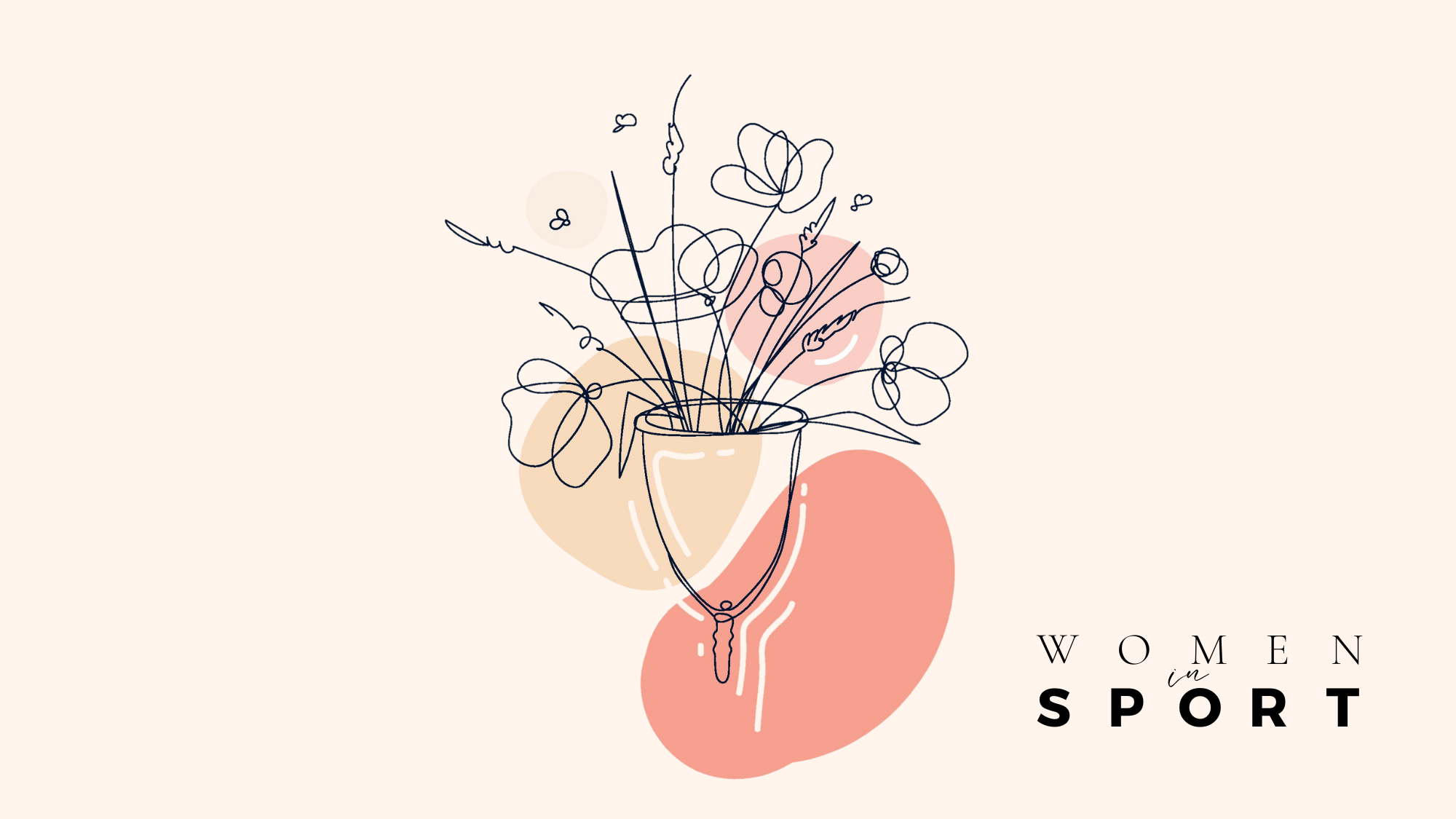This is exactly how your period affects your workout, according to two experts
Your need-to-knows.


It’s almost without a doubt that your period has impacted your workout routine in some capacity. Perhaps you were someone who skipped P.E. because of the pain of bleeding or embarrassment in the changing rooms. Maybe now you notice there are moments in your cycle when finding the motivation to exercise is - no exaggeration - impossible.
But have you ever thought about the inverse relationship between periods and sports? That is, how does your workout routine impact your cycle? If not, now might be the time, as it’s thought that 26% of women who exercise lose their periods or have irregular menstrual cycles. That’s according to The Female Health Report 2023, a survey by Project RED-S and Kyniska Advocacy, which found the prevalence is higher in recreational exercisers than competitive or pro athletes.
Known as hypothalamic amenorrhea, period loss is a symptom of a condition called relative energy deficiency in sports (RED-S). “RED-S is quite literally a shortage of energy in comparison to the demands that you're placing on your body,” says Pippa Woolven, founder of Project RED-S.
You don’t have to be skipping meals for this to occur – while it’s frequently linked with disordered eating, RED-S can happen unintentionally and can often be down to not eating at the right time or enough of the right type of foods (particularly carbohydrates), as well as not eating enough in general. So, how else how does your period affect working out? Keep reading to find out.
How does your period affect working out? Your expert guide
Of course, eating less than you burn is a commonly touted tool for weight loss, and is used by many women alongside an exercise routine to shed some pounds. But under-fuelling for long periods of time means you might also shed your health.
When the body is chronically receiving signals that there’s not enough food, it begins to shut down the reproductive system so it can conserve the energy it needs for breathing, moving and thinking. In short, long-term low energy blunts the production of your sex hormones, leading to weird or missing period cycles. Low oestrogen also puts women at a high risk of osteoporosis, with studies showing athletes without periods have 20% less bone mineral density than menstruating athletes. Studies, including this 2022 paper, also show that amenorrhea is linked with anxiety, depression, long-term infertility and cardiovascular disease.
Yet, RED-S isn’t taken seriously. According to The Female Athlete Health Report, 30% of exercising women have been told by a medical professional that it is normal to miss their period because of their activity level. Some had even been told it was a "natural" consequence of exercising and 19% of women wrongly think that a missing period might benefit their performance.
Celebrity news, beauty, fashion advice, and fascinating features, delivered straight to your inbox!
That was the case for Woolvern herself. An ex-Team GB long-distance runner, she found herself in a club where there was a culture of clean eating. “There was a collective avoidance of things deemed to be "unhealthy" or "unnecessary." I thought that changing my diet in line with the people around me who I looked up to would only benefit my training as it seemed like they were really looking after their bodies,” she says. “They made classic and subtle swaps such as avoiding carbohydrates and always ordering salad dressing on the side, but combined with the huge amounts of training we did it was the perfect storm. Within a year or so, I was mentally and physically broken with RED-S.”
Now, Woolven’s work is focused on helping amenorrheic athletes and everyday women who love to exercise – a group that is growing worryingly fast, she says. “Competitive and elite athletes have a support system as well as the time and resources to dedicate to training, resting and eating. Your average gym goer tends to rush from the gym to work and face more general life stress, so I almost fear for them the most because it's so easy to slip into RED-S without understanding it,” Woolvern explains.
A post shared by Project RED-S (@project_reds_)
A photo posted by on
How does your period impact your workout routine?
There is no way to stop the rise of RED-S without having more open conversations about menstruation, period.
Luckily, the impact of our monthly cycle is becoming much more widely discussed; Dina Asher-Smith publically said that her period was to blame for calf cramps that cost her a gold position at the Commonwealth Games. Cycle syncing has also become popular online, with workout programmes tailored to your menstrual cycle being sold by trainers and influencers.
The basic breakdown is that our ability to train and recover soars during ovulation and takes a nosedive during the luteal phase – just before our period – and at the beginning of our bleed. Research kind of supports this: a study published in Sports Medicine found exercise performance is reduced – although only by a very trivial amount – during the luteal and early follicular phase (just before and at the beginning of your period) while other research, including this 2021 paper, suggests some mental and physical barriers to performance can be a PMS symptom.
“However, at the minute, there's a lack of research into this area, and most of it is very low quality. Only 6% of sport and exercise science research is focused exclusively on women, and if you add the complexity of menstrual cycle research, we don't yet have guidelines that say specifically when or how we should train around our cycles for bigger and better results or recovery,” explains Kelly McNulty, founder of period education platform Period Of The Period and women's sport researcher.
One thing we do know is that it’s not only hormonal changes that stop us from performing well but also the side effects of hormones that make us feel like we can or can’t push our bodies. “The indirect effects of our cycle, like pain, bloating and anxiety, can all lead to perceived changes in effort, performance, training and recovery,” explains McNulty.
A post shared by Emma Pallant-Browne (@em_pallant)
A photo posted by on
Managing those symptoms is the route to improved female athlete health. These can be as simple as eating more anti-inflammatory foods during your period to reduce physical symptoms, listening to a playlist that gets you in the zone on those pesky low-motivation PMS days and simply making the most of certain menstrual cycle phases, such as post-period and ovulation, to counter any days off during harder weeks.
Women’s sporting teams like the Lionesses are implementing programmes like this right now, crediting a cycle-synced training programme for their Euros win in 2022. But awareness is about more than goals: recently, the England team scrapped its white kit in favour of navy blue shorts that feature a thin liner to absorb blood and make players more comfortable.
Striker Beth Meade told The Guardian: “It’s very nice to have an all-white kit, but sometimes it’s not practical when it’s that time of the month… We deal with it [periods] as best as we can but we discussed the shorts issue together as a team and fed our views through to [kit manufacturers] Nike.”
For those not on the England team, period care products are becoming better tailored to exercise and more accessible than ever. Adidas has a range of leggings and shorts with period pants inbuilt, while Puma has paired with Modibodi to create a similar line of leak-proof kit. Period cups also make it easier for endurance athletes as they need changing less frequently.
“When menstrual cycles aren’t supported, it takes your mind off the game,” says McNulty. “The industry needs to do better in terms of understanding periods and making sure women have access to services and products that make them comfortable while exercising.”
A post shared by Kelly McNulty (@periodoftheperiod)
A photo posted by on
5 ways to consider your periods when exercising:
1. Track
Our guides to the best period tracking apps will come in handy here, as using an app like Flo, Clue or Fitr is one of the simplest ways to track your monthly bleeds.
That, or use an old-fashioned pen and paper to log your period dates, as well as any physiological and psychological symptoms – even those that feel irrelevant. Collect data on your body and cycle for around three months before making any changes, suggests McNulty.
2. Recognise patterns
Next up: analyse what your body is telling you. “Ask yourself questions like, how long is my cycle? Are there regular symptoms occurring at the same time each month? Does my motivation to train change at different points? Do I recover really well at certain times but not others?” suggests McNulty.
Then, use that information to create a bespoke guideline. Really, your body is simply explaining how your cycle works for you.
3. Make tweaks
When you know your blueprint, you can tweak your lifestyle accordingly.
“If you want to, you can start to adapt your workout routine to get ahead of negative effects and to maximise when you’re feeling good,” McNulty adds.
4. Always fuel well
One thing that doesn’t change around your cycle is the fact that your workouts need fuel.
“A big tip is that women should avoid exercising fasted as that can freak out your female hormones. It doesn't mean you have to have a full meal, but even just a banana and some peanut butter before working out can signal to your body that you’re not depriving it,” says Woolven.
5. Talk to your GP
Finally, if you notice any changes to your periods, energy levels or injuries, it’s always best to talk to your GP.
Unfortunately, many of them aren’t trained to understand RED-S and amenorrhea, but Woolven has a template letter you can take to your doctor explaining your condition.


Chloe Gray is a freelance journalist who writes and talks about health, fitness, and wellbeing through a feminist lens. She was part of the launch team for Stylist magazine's fitness brand, Strong Women, and has written for i news, Women's Health, Red magazine, Good Housekeeping, Refinery29, and more. She's all about building mental and physical strength, eating delicious food that fuels you well, and making the fitness industry more accessible and enjoyable. She's also a qualified fitness trainer and research nerd, so you can be sure everything you read is backed by proper science.